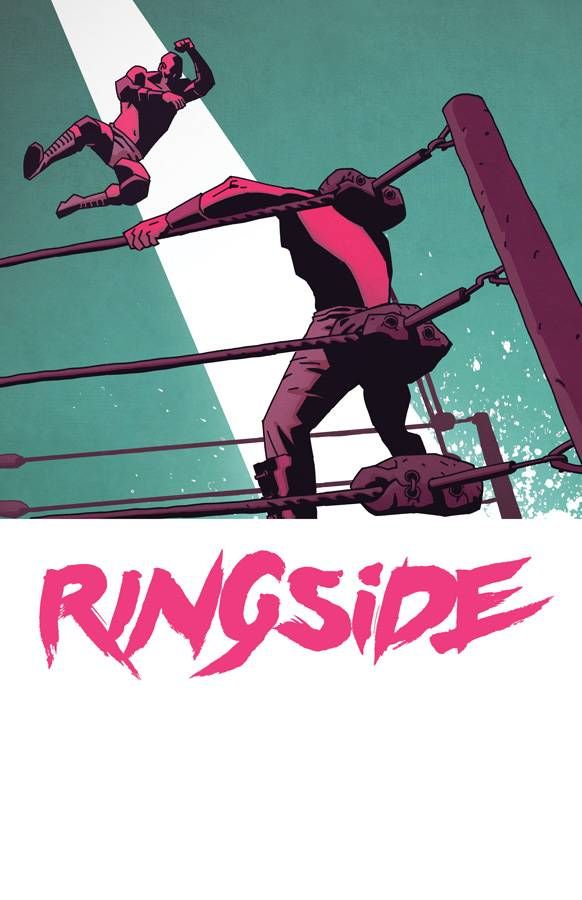While the title of Image Comics' latest series references the professional wrestling ring, Joe Keatinge and Nick Barber's superbly characterized "Ringside" #1 is about the complex world of the industry's players just about everywhere except inside the ropes. Keatinge's story introduces no less than half a dozen interconnected key figures, and all are uniquely defined through their words, personalities and demeanors. Barber's rough art carries a careful, subtle consistency and manages to give each of these characters a distinctive appearance that makes the rush of new faces easily identifiable, and -- by the end of this first chapter -- every one of these characters readily resonates with readers.
Those who are not fans of pro wrestling might presume this comic is not for them, but Keatinge puts forward a superlative effort in inviting all readers with a definable and eclectic set of characters, even if not all of these cast members are necessarily likeable people. For instance, former pro wrestler Dan Knoussos -- famously known as "The Minotaur" back in his fighting days -- seeks to jettison every aspect of his past and refuses to explore any significant opportunity in the business that remains for him, yet is steadfastly loyal to past friends. On the other hand, Andre -- an enterprising, go-getting former colleague -- embraces his past and has built his own tiny empire in the wake of it. A young, idealistic and naïve up-and-comer with a personal secret, enamored with the business, fails to understand Dan's utter contempt for it.
Barber employs an artistic technique reminiscent of Jason Latour's effective style in "Southern Bastards"; his deceptively simple lines bring a kind of seedy, dirty texture to the art, a well-suited look to a dark, sometimes depressing and violent world whose underbelly is decidedly less gaudy outside of the ring. It also works well for the characters themselves; Dan's older but square-jawed facial structure, the balding Andre and his clunky glasses and the relatively softer features of Dan's friend Amy are all rendered simply, yet distinctively in a manner that almost seems effortless.
Simon Gough complements Barber's lines with a limited color palette; he uses little in the way of graduated colors and instead goes for solid and contrasting tones. Foreground objects and characters are cast in colors that clearly differentiate them from the backgrounds, a necessary technique to embellish Barber's lines, which helps keep things clear and allows Keatinge's story to flow. The minimalist approach taken by both artists serves to convey the story's environment but deliberately does little else to call attention to itself; it's a well-executed look that allows the reader's focus to stay on Keatinge's cast rather than attempt to wow with any kind of flashiness.
The flashiness of the wrestling ring is nowhere to be found in "Ringside" #1, which seems to be the whole point of Keatinge and Barber's concept. The events inside the ring may be scripted, sure, but what goes on outside of it is just as unpredictable as anything else in life. There are no gaudy costumes, folding chairs to the head or amped up bravado for the sake of applause in the unseen world behind the show; instead, there are back alley beatings, friends in need and characters trying to make a go of it in a very real world, one far more intimidating than a wrestling ring. Keating and Barber's "Ringside" #1 is a realistic peek behind the scenes and into the lives of several characters connected to a glory-seeking world, but their lives are anything but glorious and that's the compelling hook this issue sells so well.

